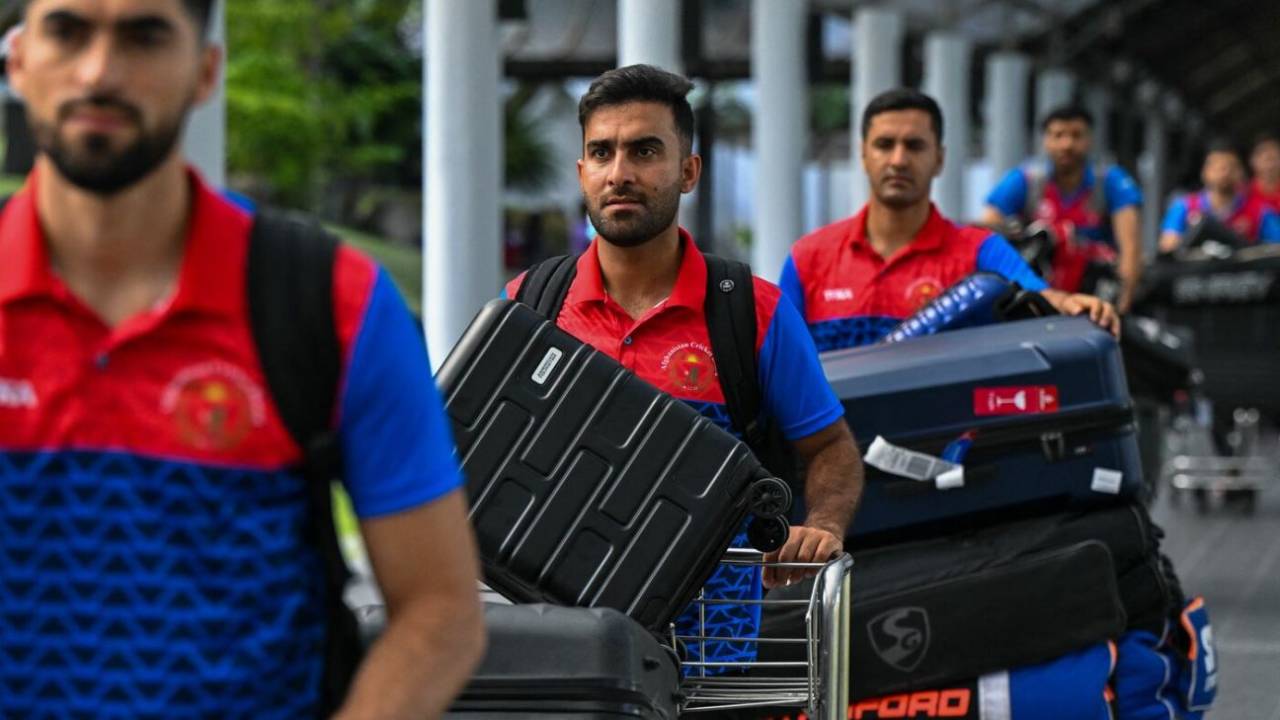So, we've arrived at another ODI series. While Tests enjoy the affections of the purists, and T20s set the world alight, bilateral ODIs have become the quiet presence in the corner of the party. They used to be the cool kids, and occasionally still have their moments. But when you think of the world of cricket, these are the series that seem least likely to stimulate.
Add to this the fact that Sri Lanka and Afghanistan have played surprisingly little cricket against each other for teams in the same global neighbourhood and, as such, have not developed tantalising narratives. When Sri Lanka play Pakistan, it's all smiles and saccharine affection. When Afghanistan play Pakistan, you need extra security in the stands.
Sri Lanka v Afghanistan? There's not a lot there. Yet.
So why should we care?
Perhaps the greatest triumph of the ODI Super League structure is to bring context to series like this.
These three ODIs are, in fact, vital to both teams. The rules are that after 24 ODIs (four away series, four home series, three ODIs each), you've got to place in the top eight, out of 13 teams, to gain automatic qualification for next year's ODI World Cup. If you don't you will have to play a qualifying tournament.
Afghanistan are sitting in a relatively
pretty good spot. After having played only half their Super League games, they're at 100 points, having won 10 matches and lost two (their opponents so far have been Zimbabwe, Bangladesh, Netherlands, and Ireland). This puts them at seventh on the Super League table - essentially on the cusp of qualification. Three wins here might just seal their World Cup place.
Sri Lanka, meanwhile, essentially need to win all their remaining six matches. After 18 games, they have a paltry 62 points, which puts them at 10th on the table. The likeliest outcome for them is that they will have to play the qualifying tournament, as they are probably in a three-way battle with Ireland and South Africa to claim the last automatic-qualification spot. Even a rained out match - which is very possible in Pallekele in November - is a bad result for them.
Their best ODI series in recent times - the victory over Australia in a
five-match series this year - didn't count towards the Super League at all.
What will conditions be like?
In some ways, the conditions in Pallekele might even out the bowling attacks. It is one of Sri Lanka's livelier pitches for seam bowling, with the ball tending to do plenty under lights, particularly when there's a bit of moisture around, as there usually is in November.
With Dushmantha Chameera likely out for several more months following ankle surgery, and Dilshan Madushanka still unavailable, the hosts' seam attack will be led by Lahiru Kumara, with Kasun Rajitha likely being the second seam option. Pramod Madushan is available as well. Afghanistan, meanwhile, have Fazalhaq Farooqi, who has done well against Sri Lanka in T20Is, as well as left-armer Fareed Ahmad, and Yamin Ahmadzai.
Owing to little more than familiarity with the conditions, though, Sri Lanka will hope they have the higher ground on the batting front. Afghanistan's arrival having been only several days ago, they've not had a lot of time to familiarise themselves with conditions either.
Battle to watch
Sri Lanka's spinners vs Afghanistan's
Twenty-nine ODIs into his career,
Wanindu Hasaranga is a decent one-day spinner, but not quite the phenomenon he is in T20Is. In this format, he has 34 wickets in 31 matches, at an average of 35.55, though with a half-decent economy rate of 5.09. His counterpart,
Rashid Khan, has corresponding numbers of 18.65 and 4.16.
The caveat is that 46 of Rashid's bowling innings have been against Zimbabwe and Ireland - teams he has absolutely dominated. But even against the likes of Pakistan, or West Indies, or Bangladesh, his record is much more impressive than that of Hasaranga, who is frequently an economical spinner, but not a penetrative one in this format. Hasaranga, though, did claim career-best figures of
4 for 58 against Australia, in the last ODI series he played, so he will hope his ODI trajectory has shifted.
Mujeeb Ur Rahman has also got significantly better numbers than
Maheesh Theekshana, averaging 23.43 a wicket to Theekshana's 33.40, although their economy rates are both excellent, a tick either side of four.
Theekshana, though, is only nine ODIs into his career, and has proved an excellent throughout-the-innings operator already. There have been few situations, across formats, in which he has seemed overwhelmed.
Andrew Fidel Fernando is ESPNcricinfo's Sri Lanka correspondent. @afidelf
